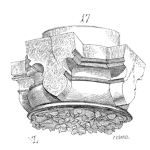
In all the years of facilitating RCFA, what seems like the easiest part has proven to be one of the most challenging. Documenting the problem statement. It is human nature is to immediately develop an opinion and provide a solution. When a group of people are put in a room together for an RCFA they immediately believe they are there to solve THE problem. This leads to a focus on solutions to the event as it occurred. The team gathers in the room and the facilitator asks what the problem statement is, and the replies tell it all. “Jane, the operator, hit the wrong button.” “The technician didn’t know how to install the bearing.” “Poor lubrication.” Sound familiar?
While these will likely end up on your RCFA as causal factors in some way, they are not problem statements. When constructing the problem statement there are a few things to consider. First, the problem statement should be directly tied to business goals. For example, “loss of production” or “Safety risk elevated”. The goal is to be simple in the problem statement and reduce the amount of time trying to document it. Too much time is often spent trying to articulate a problem statement which includes a causal factor that people believe to be the root cause. This takes away time to map out your causal factors and get to latent and systemic layers in the allotted time.
Additional details regarding a specific event or recurrent event should also be documented. These attributes may include:
- Date(s) of event
- Relative timing (shift, season, etc.)
- Number of actual occurrences if applicable
- Cost to the business per event
- Safety impact per event
- Quality impact per event
- Maintenance impact per event
Documenting these details helps to understand the total business impact of either individual or recurring events and provides better clarity into what can be invested to help eliminate or reduce probability of reoccurrence. These details while not part of the problem statement, are part of the problem details.
So, keep your problem statement short, sweet, and connected to business impact. Document problem details so you have better understanding of total impact. And, save some time which can be better utilized getting into the detailed causal factors.
Leave a Reply